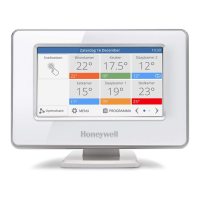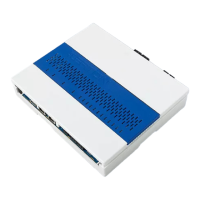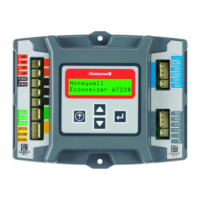ENGINEERING MANUAL OF AUTOMATION CONTROL
ELECTRONIC CONTROL FUNDAMENTALS
120
INTRODUCTION
This section pr ovides information a bout electr onic contr ol
systems used to contr ol HVAC equipment. An electr onic contr ol
system compr ises a sensor , contr oller, and final contr ol element.
The sensor s used in electr onic contr ol systems ar e simple, low-
mass devices tha t pr ovide sta ble, wide r ange, linear, and f ast
response. The electr onic contr oller is a solid-sta te device tha t
pr ovides contr ol over a discr ete por tion of the sensor r ange and
generates an amplif ied correction signal to contr ol the final
contr ol element. Electr onic contr ollers pr ovide two-position,
pr opor tional, or pr opor tional + inte gral (PI) contr ol.
Features of electronic control systems include:
— Controllers can be remotely located from sensors and
actuators.
— Controllers can accept a variety of inputs.
— Remote adjustments for multiple controls can be located
together, even though sensors and actuators are not.
—Electronic control systems can accommodate complex
control and override schemes.
— Universal type outputs can interface to many different
actuators.
—Display meters indicate input or output values.
The sensor s and output de vices (e.g., actua tor s, relays) used
for electronic control systems are usually the same ones used
on micr oprocessor-based systems. The distinction betw een
electronic contr ol systems and micr oprocessor-based systems
is in the handling of the input signals. In an electronic control
system, the analo g sensor signal is amplif ied, then compar ed
to a setpoint or o verride signal thr ough voltage or cur rent
compar ison and contr ol circuits. In a micr oprocessor-based
system, the sensor input is con verted to a dig ital form, wher e
discrete instructions (algorithms) perform the process of
comparison and control.
Electr onic contr ol systems usuall y have the following
characteristics:
Controller: Low voltage, solid sta te.
Inputs: 0 to 1V dc, 0 to 10V dc, 4 to 20 mA, resistance
element, ther mistor, ther mocouple .
Outputs: 2 to 10V dc or 4 to 20 mA de vice.
Control Mode: Two-position, propor tional, pr oportional
plus inte gral (PI), step.
Cir cuits in this section ar e gener al. A resistance-temper atur e
input and a 2 to 10V dc output are used for purposes of
discussion. Electr ic circuits ar e defined in Electr ic Contr ol
Fundamentals. A detailed discussion on contr ol modes can be
found in the Control Fundamentals section.
DEFINITIONS
NOTE: For definitions of ter ms not in this section, see the
Control Fundamentals section.
Authority (Compensation Authority or Reset Authority):
A setting that indicates the relative effect a compensa-
tion sensor input has on the main setpoint (e xpr essed
in percent).
Compensation changeover: The point a t which the
compensa tion effect is r eversed in action and c hang es
from summer to winter or vice v ersa. The per cent of
compensa tion effect (author ity) ma y also be chang ed
at the same time.
Compensation control: A process of automa tically adjusting
the contr ol point of a g iven contr oller to compensa te
for changes in a second measur ed var iable such as
outdoor air temper atur e. For example , the hot dec k
contr ol point is r eset upw ar d as the outdoor air
temper atur e decr eases. Also known as “r eset contr ol”.
Compensation sensor: The system element w hich senses a
variable other than the contr olled var iable and r esets
the main sensor contr ol point. The amount of this ef fect
is established by the authority setting.
Control Point: The actual v alue of a contr olled variable
(setpoint plus or min us offset).
Deviation: The difference between the setpoint and the value
of the controlled variable at any moment. Also
called offset.
Direct acting: A direct acting contr oller incr eases its output
signal on an increase in input signal.
Electric control: A control circuit that operates on line or low
voltage and uses a mechanical means, such as a
temperature-sensitive bimetal or bellows, to perform
control functions, such as actuating a switch or
positioning a potentiometer. The controller signal usually
operates or positions an electric actuator, although relays
and switches are often included in the circuit.
Electronic control: A control circuit that operates on low
voltage and uses solid-state components to amplify
input signals and perform control functions, such
as operating a relay or providing an output signal
to position an actuator. Electronic devices are
primarily used as sensors. The controller usually
furnishes fixed control routines based on the logic
of the solid-state components.

